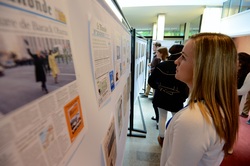
The journalism classes that Dr. Johanna Cleary and I teach were very lucky (shoutout to UF’s Sixtine Gurrey!) to score a visit on Wednesday 14 May to one of the world’s most prestigious news organizations, Le Monde.
We were lucky to have a gracious host in Brigitte Billiard, who with colleagues provided a brief history of the newspaper and smaller-group tour.
And we were doubly lucky to hear from two distinguished journalists who devoted an hour of their time to answering candidly questions from our students.
We heard from Gilles Paris, a longtime foreign correspondent who will soon move to Washington to cover the United States for Le Monde, and from Alexandre Lechenet, who works on the newspaper’s growing website and data journalism projects.
Ironically, we came to Le Monde just minutes after it made news itself: its first female editor, Natalie Nougayrede, resigned in what Reuters described as a power struggle with top editors, seven of whom resigned last week.
Some of the struggle apparently was embodied by the two journalists we heard from: can print and digital cultures merge? More to the point, can print play second fiddle to digital?
Gilles and Alexandre think so. They described how print — though very strong — is becoming a niche product in comparison to the enormous digital audience. Le Monde offers a basic level of news for free; subscribers get more content and no advertising.
Like elite newspapers worldwide, Le Monde is trying to retain its distinctive journalism in a digital world. We saw its Web operations, its video studios and the graphics department that now produces animated videos — in this case, about the upcoming World Cup. Those who used to draw maps just for the print edition now create graphics for the website, too.
The culture is adapting. And throughout, we saw people who care passionately about accuracy and excellence.
As Gilles and Alexandre explained, the audience is not always so charitable. French people accuse journalists of falsifying information and of taking orders from politicians. Although such cynicism is not new (media bashing is, after all, an international sport), it is growing worse as France’s economy stagnates and stumbles. The French fear their country is slipping, which is provoking general angst at all institutions. (Politician took a real beating in the April elections.)
Yet amid all the grumbling, the Le Monde online audience continues to grow significantly. So while readers and viewers may complain, they still depend on Le Monde for news and information. That’s the best compliment anyone can pay a journalist.
Lessons like what we learned at Le Monde are part of how a study-abroad program can open the classroom to the world — or, in this case, the news organization named The World.
We were lucky to have a gracious host in Brigitte Billiard, who with colleagues provided a brief history of the newspaper and smaller-group tour.
And we were doubly lucky to hear from two distinguished journalists who devoted an hour of their time to answering candidly questions from our students.
We heard from Gilles Paris, a longtime foreign correspondent who will soon move to Washington to cover the United States for Le Monde, and from Alexandre Lechenet, who works on the newspaper’s growing website and data journalism projects.
Ironically, we came to Le Monde just minutes after it made news itself: its first female editor, Natalie Nougayrede, resigned in what Reuters described as a power struggle with top editors, seven of whom resigned last week.
Some of the struggle apparently was embodied by the two journalists we heard from: can print and digital cultures merge? More to the point, can print play second fiddle to digital?
Gilles and Alexandre think so. They described how print — though very strong — is becoming a niche product in comparison to the enormous digital audience. Le Monde offers a basic level of news for free; subscribers get more content and no advertising.
Like elite newspapers worldwide, Le Monde is trying to retain its distinctive journalism in a digital world. We saw its Web operations, its video studios and the graphics department that now produces animated videos — in this case, about the upcoming World Cup. Those who used to draw maps just for the print edition now create graphics for the website, too.
The culture is adapting. And throughout, we saw people who care passionately about accuracy and excellence.
As Gilles and Alexandre explained, the audience is not always so charitable. French people accuse journalists of falsifying information and of taking orders from politicians. Although such cynicism is not new (media bashing is, after all, an international sport), it is growing worse as France’s economy stagnates and stumbles. The French fear their country is slipping, which is provoking general angst at all institutions. (Politician took a real beating in the April elections.)
Yet amid all the grumbling, the Le Monde online audience continues to grow significantly. So while readers and viewers may complain, they still depend on Le Monde for news and information. That’s the best compliment anyone can pay a journalist.
Lessons like what we learned at Le Monde are part of how a study-abroad program can open the classroom to the world — or, in this case, the news organization named The World.
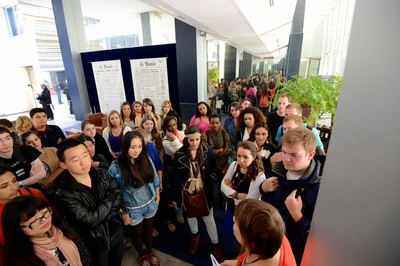
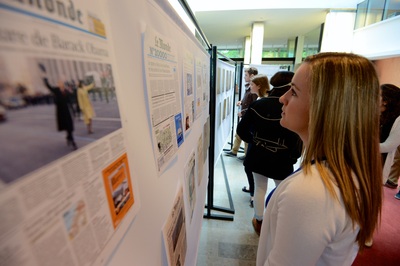
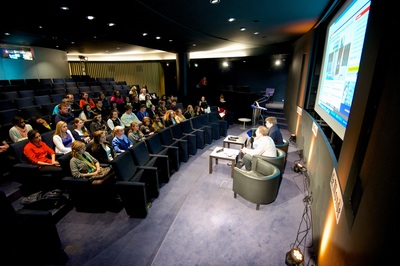
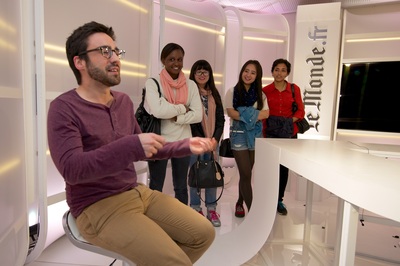
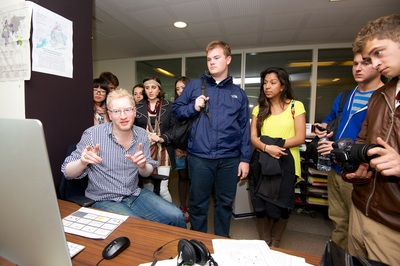
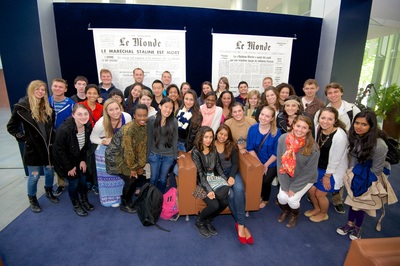
 RSS Feed
RSS Feed